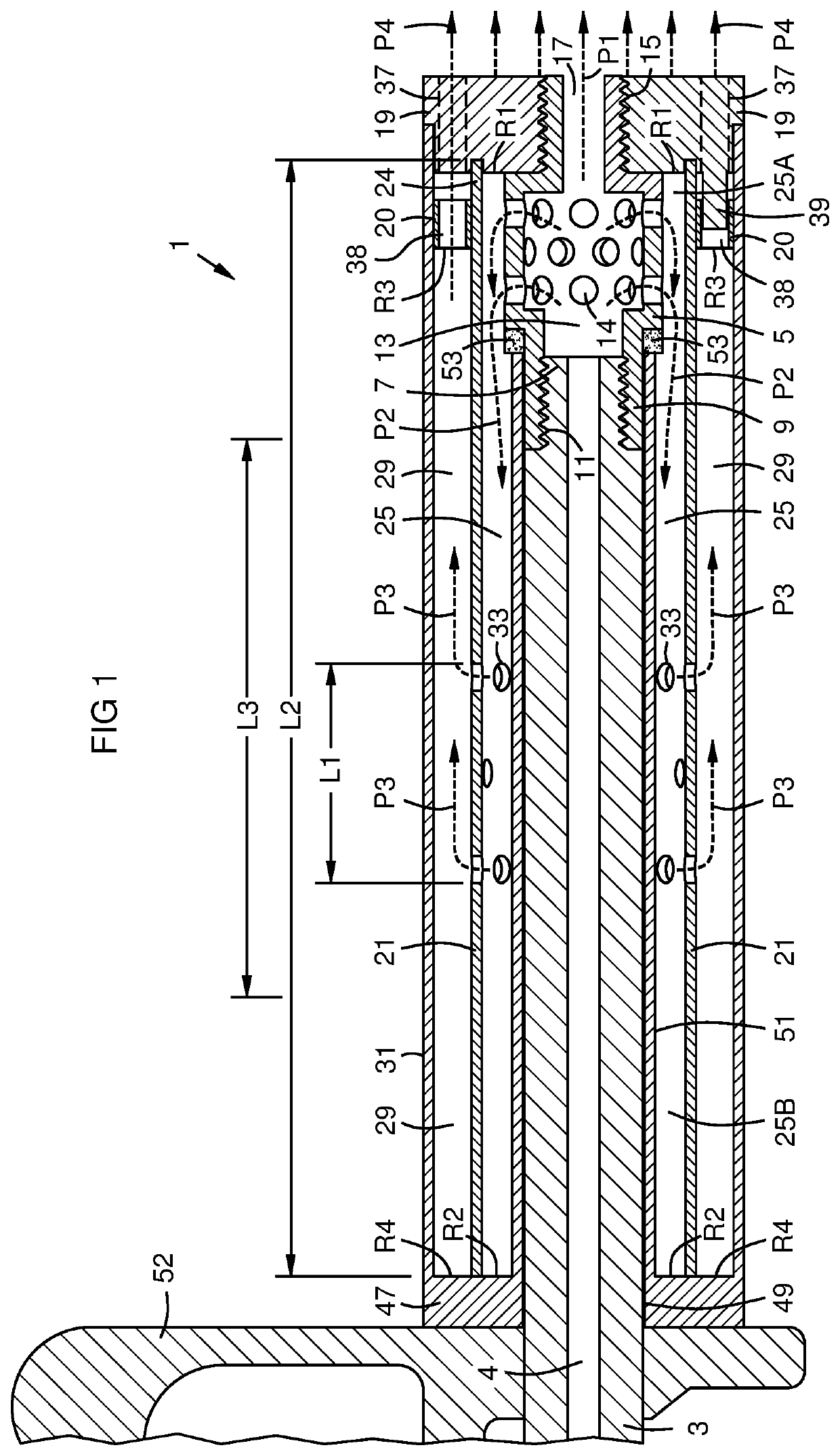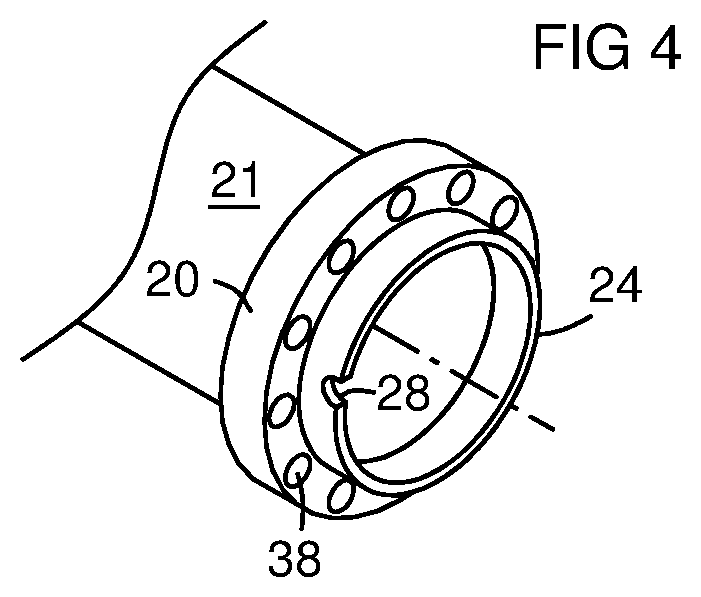Suppressor for firearms
a suppressor and firearm technology, applied in the direction of weapons, weapon components, etc., can solve the problems of affecting the operation of the receiver, contaminating the barrel with solids, and high stress, and achieve the effect of reducing or eliminating the backpressure of prior suppressors, low stress, and low cos
- Summary
- Abstract
- Description
- Claims
- Application Information
AI Technical Summary
Benefits of technology
Problems solved by technology
Method used
Image
Examples
Embodiment Construction
[0016]FIG. 1 is a sectional view of a suppressor 1 mounted on a barrel 3 of a firearm. A conduit 5 of the suppressor extends forward from the muzzle 7. The back end 9 of the conduit has internal threads 11 engaging external threads on the muzzle. The conduit has a bullet passage 13 for bullets to pass from the barrel bore 4 through the conduit, preferably without contact. The front end or exit 17 of the bullet passage closely fits the diameter of the bullet without contact. This minimizes propellant gas venting to the atmosphere via the bullet exit instead of going through the suppressor. An inner shell 21 has a front end 24 sealed around the front end of the conduit, for example by abutting a front plate 19 attached to the conduit by threads 15 or other means. The inner shell has a back end that extends backward over the barrel, forming a continuous inner annular chamber 25 with a first portion 25A around the conduit and a second portion 25B longer than the first portion around a f...
PUM
 Login to View More
Login to View More Abstract
Description
Claims
Application Information
 Login to View More
Login to View More - R&D
- Intellectual Property
- Life Sciences
- Materials
- Tech Scout
- Unparalleled Data Quality
- Higher Quality Content
- 60% Fewer Hallucinations
Browse by: Latest US Patents, China's latest patents, Technical Efficacy Thesaurus, Application Domain, Technology Topic, Popular Technical Reports.
© 2025 PatSnap. All rights reserved.Legal|Privacy policy|Modern Slavery Act Transparency Statement|Sitemap|About US| Contact US: help@patsnap.com



